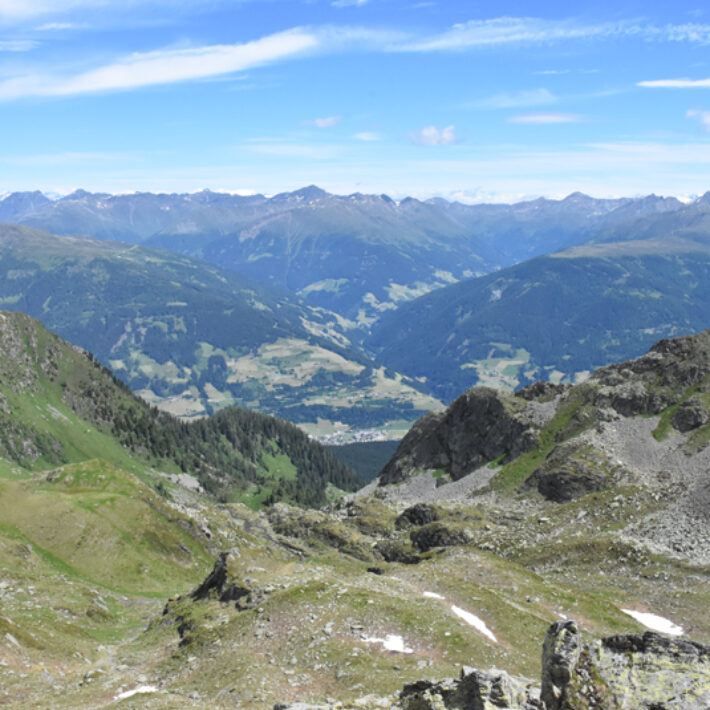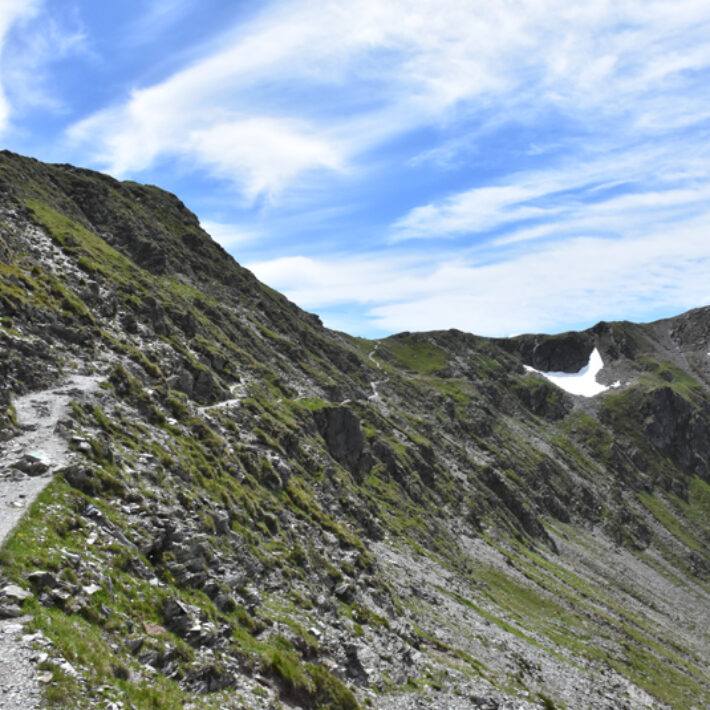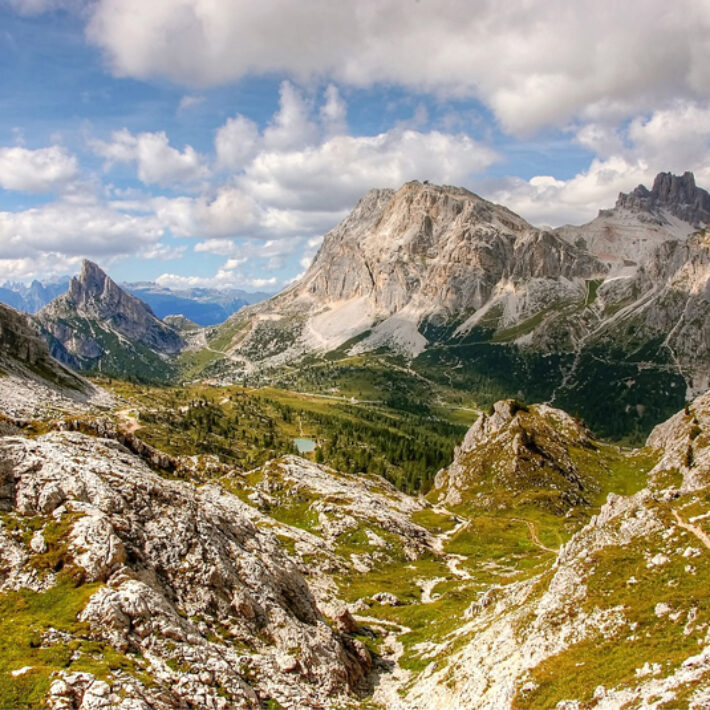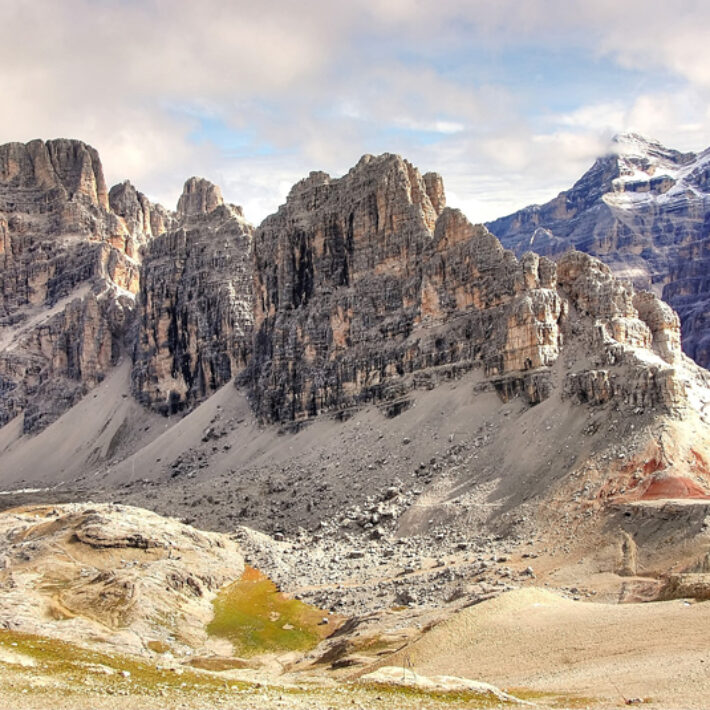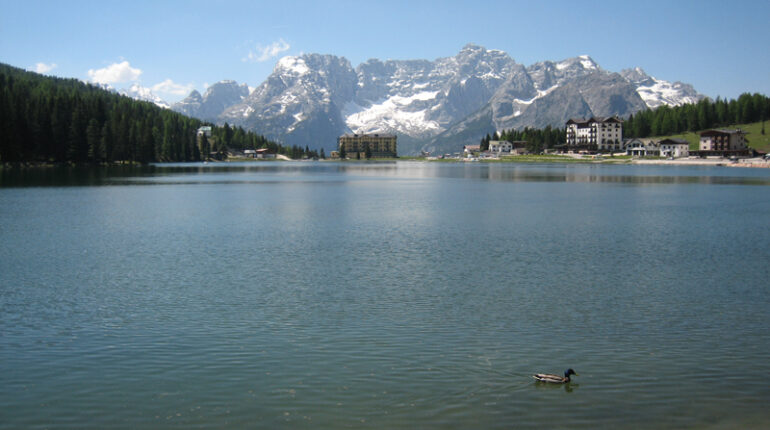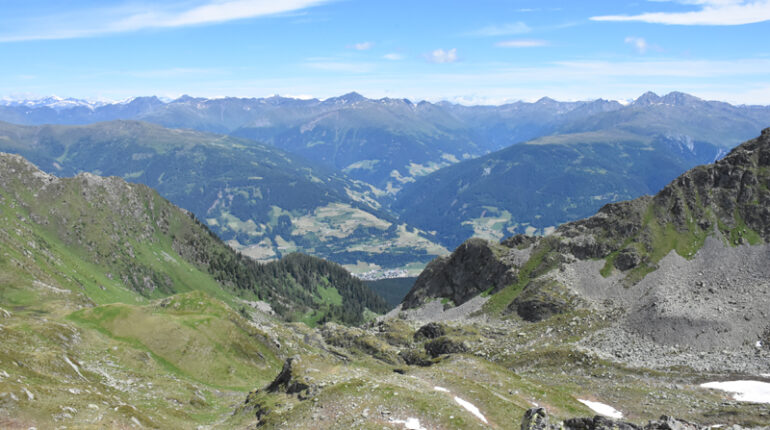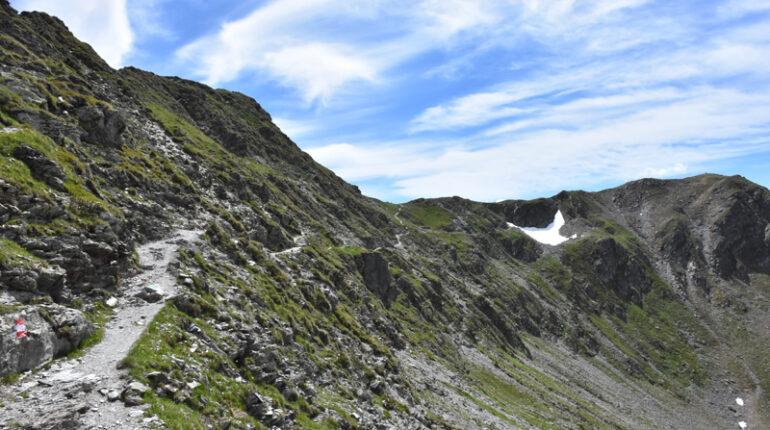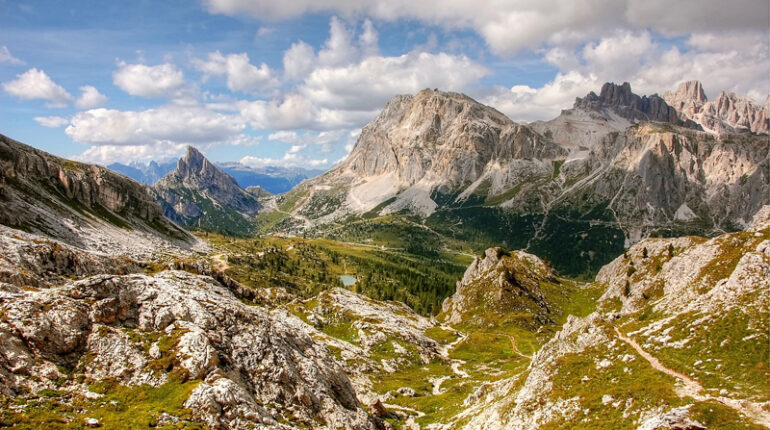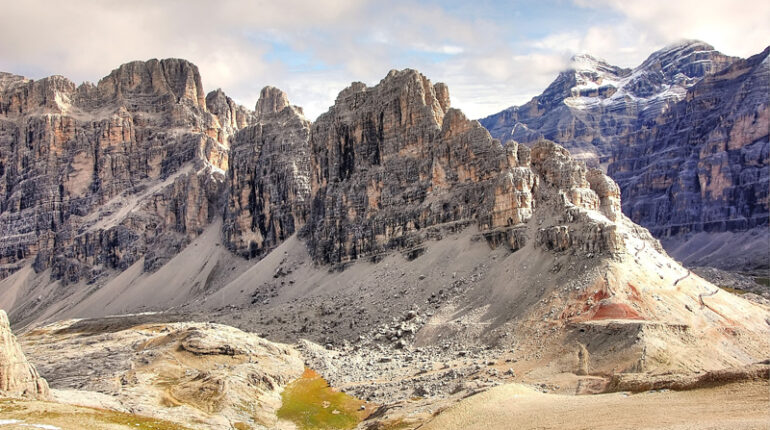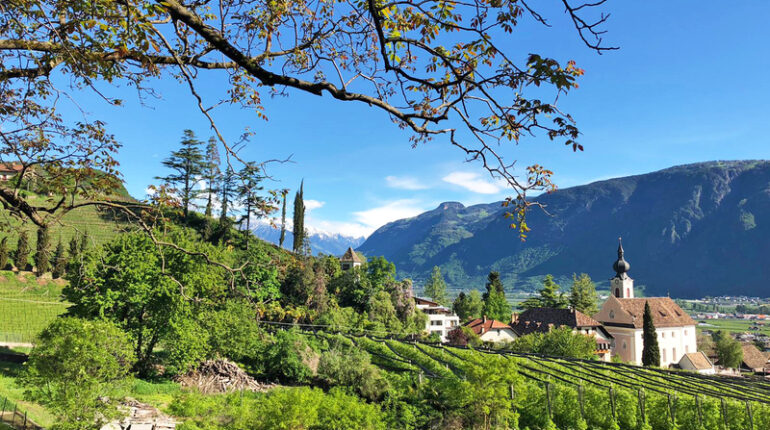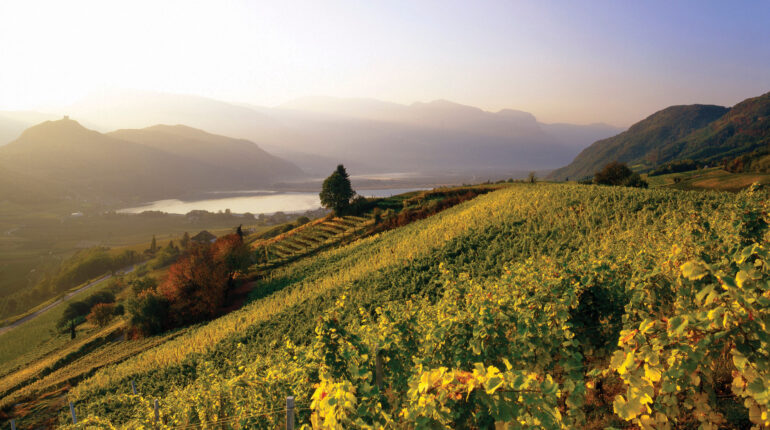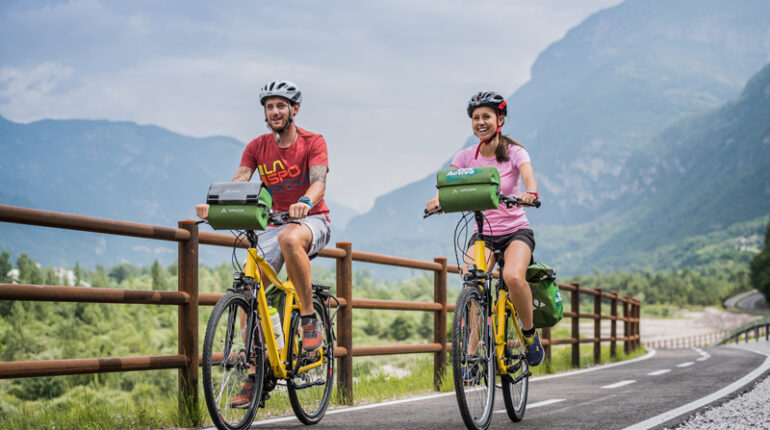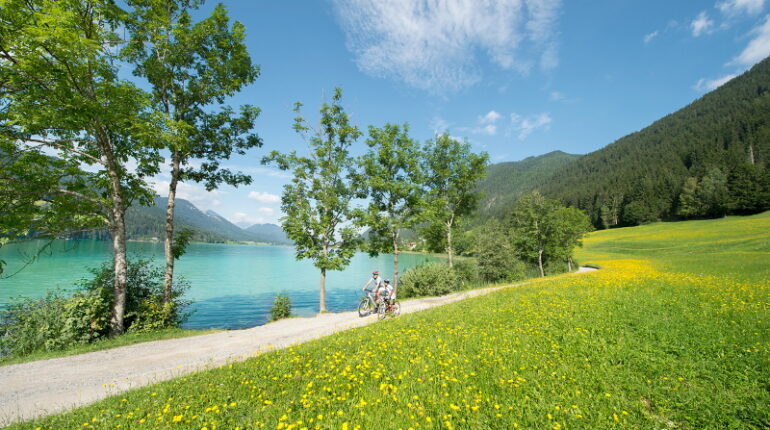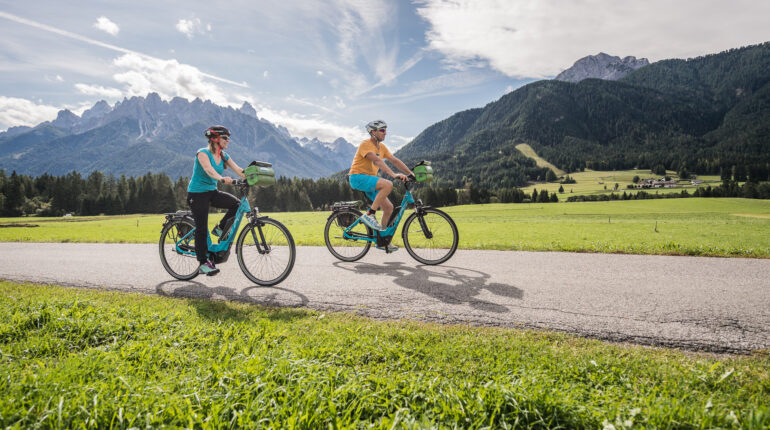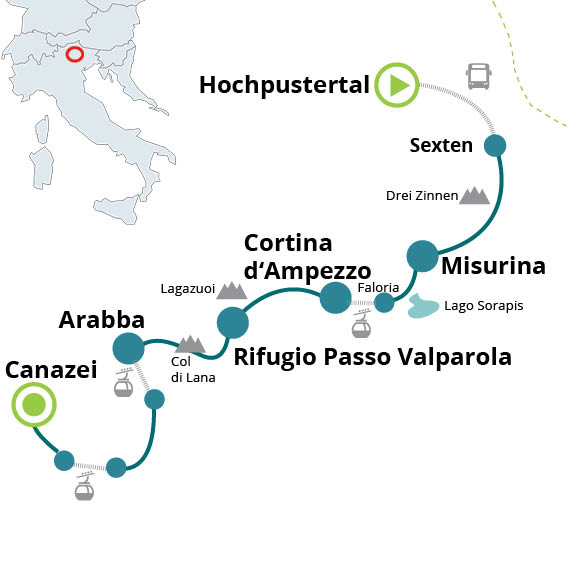
The Dolomite front has left deep tracks: fortresses, bunker and funk holes are silent witnesses to one of the darkest chapters in human history. The First World War also raged in the Dolomites, in the midst of these majestic mountains and breathtaking nature. This hiking tour aims to commemorate the hard-earned and fragile peace in a united Europe leading you through a unique landscape, the same one where thousands of Austrian and Italian mountaineers found their death in a hail of bullest and even more because of cold and avalanches.
The hike runs along well-marked mountain and hiking trails. The tour is suitable for everyone with a good basic condition. Most of the stages can also be shortened using public buses and cable cars. Passionate hikers and nature lovers will, as well as those who are interested in history will find here full satisfaction. The hiking tour is suitable for children aged 14 and over.
Included and Not Included Services
Accommodation in inns and hotels 3*** category, partly huts
Breakfast buffet or full breakfast
Videobriefing
Luggage transfer from hotel to hotel
Transfers according to the program
Cablecars´ tickets: Faloria, Arabba, Canazei
Back transfer to Hochpustertal/Alta Pusteria at the end of the tour
Well planned routes
Detailed documents (maps, route description, places to visit, important telephone numbers)
Telephone service hotline for the entire tour
Navigation app
Arrival to the starting point of the tour
Departure at the end of the tour
Drinks, tourist tax and all extras
Lunch, Dinner
Tickets for bus and cable car to shorten the stages
Not mentioned entries
Travel insurance
All not expressly mentioned under the item „Included services“
Day 1: Alta Pusteria/Hochpustertal (Villabassa/Niederdorf or Dobbiaco/Toblach)
Individual arrival at the hotel in Villabassa/Niederdorf or Dobbiaco/Toblach. Free, ungarded public car park near the hotel.
Day 2
(ascent approx. 1.060 m, descent approx. 760 m / approx. 6-7 hours)
A transfer will bring you to the starting point of your hiking tour into the Valley Fischlein in Sesto/Sexten. From here you hike under the Paternkofel, which was fought over in the First World War (the legendary mountain guide Sepp Innerkofler lost his life here) in direciton of the landmark of the Dolomites, the Three Peaks - part of the UNESCO World Nature heritage. Monte Piano is located above the stage town of Misurina, the northern summit of which was occupied by the Austrians and the southern summit by the Italians. Nowadays an open-air museum about the First World War is there.
Day 3: Misurina – Lake Sorapis - Cortina d‘Ampezzo
(ascent approx. 1.360 m, descent approx. 620 m / approx. 6-7 hours Variant: ascent approx. 800 m, descent approx. 370 m / approx. 4,5 hours)
After a bus ride to the former Rifugio San Lorenzo, you hike up to Lago Sorapis, a milky turquoise glacial lake in the Sorapiss Group. From Lago Sorapis, the stage takes you to Passo Tre Croci, from where you hike to Faloria and then take the gondola down to Cortina d‘Ampezzo. This was only assigned to the Kingdom of Italy after the defeat of the Habsburg Monarchy in 1918. Just 38 years later, winter sports enthusiasts from various nations would compete for Olympic medals there. In 2026, Cortina will once again host the Winter Olympics, together with Milan. It is possible to shorten the stage by taking the public bus from Passo Tre Croci to Cortina.
Day 4: Cortina d‘Ampezzo – Rifugio Passo Valparola
(ascent approx. 1.440 m, descent approx. 510 m / approx. 7 hours)
From Cortina, you hike today to Col Drusciè. Below the famous Tofana rock formation, you will climb up towards the summit of Lagazuoi. During World War I, soldiers carved tunnels and trenches into the rock faces, turning the mountain into a veritable fortress. Today, you can visit the restored tunnels, trenches, and artillery positions in the open-air museum on Lagazuoi and relive the events of the war. There is even an approximately 1 km long walkable tunnel that leads into the valley inside the mountain. From the summit of Lagazuoi, a cable car also leads directly to the Falzarego Pass if you want to shorten the tour.
Day 5: Rifugio Passo Valparola - Col di Lana – Arabba
(ascent approx. 860 m, descent approx. 1.430 m /approx. 7 hours)
From Passo Valparola, the trail leads you through sparse Swiss stone pine and larch forests over a long grassy ridge to Passo Sief. There, as is often the case in the Dolomites, you will encounter relics from World War I, including overgrown trenches, shelters, and barbed wire. You will hike directly below Monte Sief and Col die Lana. Col di Lana gained sad notoriety during the First World War. At that time, it was fiercely contested as a cornerstone of the Alpine front. The trail continues to Arabba, the stage destination.
Day 6: Arabba – Canazei
(ascent approx. 330 m, descent approx. 330 m /approx. 3,5 hours)
In the morning, take the cable car to the starting point of your tour. From Rifugio Luigi Gorza, hike along the ridge of the Fedaia Pass towards Pordoi. This hike offers a unique panorama of the Marmolada. From Col di Rosc, take the cable car down to the valley and then hike to Canazei in the Fassa Valley, your destination for the day.
Day 7: Transfer to Alta Pusteria/Hochpustertal + departure
In the morning transfer to Alta Pusteria/Hochpustertal/; individual departure or possibility to extend your stay.
| Standard | ||
|---|---|---|
| Package | view calendar | |
It is recommended to purchase an optional travel cancellation policy. Prices valid subject to changes in the offer, omissions, printing errors or arithmetic.
| Price per night in double room with breakfast | Toblach | Arrival on 20/06/2026 | 89 € |
| Single room supplement per night | Toblach | Arrival on 20/06/2026 | 39 € |
| Price per night in double room with breakfast | Canazei | Arrival on 20/06/2026 | 99 € |
| Single room supplement per night | Canazei | Arrival on 20/06/2026 | 39 € |
| Price per night in double room with breakfast | Toblach | Arrival on 27/06/2026 | 89 € |
| Single room supplement per night | Toblach | Arrival on 27/06/2026 | 39 € |
| Price per night in double room with breakfast | Canazei | Arrival on 27/06/2026 | 99 € |
| Single room supplement per night | Canazei | Arrival on 27/06/2026 | 39 € |
| Price per night in double room with breakfast | Toblach | Arrival on 04/07/2026 | 89 € |
| Single room supplement per night | Toblach | Arrival on 04/07/2026 | 39 € |
| Price per night in double room with breakfast | Canazei | Arrival on 04/07/2026 | 99 € |
| Single room supplement per night | Canazei | Arrival on 04/07/2026 | 39 € |
| Price per night in double room with breakfast | Toblach | Arrival on 18/07/2026 | 89 € |
| Single room supplement per night | Toblach | Arrival on 18/07/2026 | 39 € |
| Price per night in double room with breakfast | Canazei | Arrival on 18/07/2026 | 99 € |
| Single room supplement per night | Canazei | Arrival on 18/07/2026 | 39 € |
| Price per night in double room with breakfast | Toblach | Arrival on 05/09/2026 | 89 € |
| Single room supplement per night | Toblach | Arrival on 05/09/2026 | 39 € |
| Price per night in double room with breakfast | Canazei | Arrival on 05/09/2026 | 99 € |
| Single room supplement per night | Canazei | Arrival on 05/09/2026 | 39 € |
| Price per night in double room with breakfast | Toblach | Arrival on 12/09/2026 | 89 € |
| Single room supplement per night | Toblach | Arrival on 12/09/2026 | 39 € |
| Price per night in double room with breakfast | Canazei | Arrival on 12/09/2026 | 99 € |
| Single room supplement per night | Canazei | Arrival on 12/09/2026 | 39 € |
It is recommended to purchase an optional travel cancellation policy. Prices valid subject to changes in the offer, omissions, printing errors or arithmetic.
By car: on the motorway Brenner/Brennero (A22) to Brixen/Bressanone – take the exit “Brixen-Pustertal”, then along the valley Pustertal/Valle Pusteria (SS49) to Villabassa/Niederdorf or Toblach/Dobbiaco. Or drive along the Felbertauernstraße to Lienz in Eastern Tyrol (Austria) and then further into Italy through the valley Pustertal/Valle Pusteria to Toblach/Dobbiaco or Villabassa/Niederdorf.
By train: take the train from Innsbruck over the Brenner/Brennero to Franzensfeste/Fortezza. Change train for the Pustertal/Valle Pusteria - Lienz and get off at Villabassa/Niederdorf orToblach/Dobbiaco. Timetable available on: www.deutschebahn.de, www.oebb.at, www.trenitalia.com.
By plane: Low cost flights are available to Innsbruck airport, „Sant’ Angelo - Antonio Canova“ airport in Trevisoand/or to the „Marco Polo“ airport in Venice. On request, we can organise transfers from the airport to the starting point of the cycle tour.
Inns and hotels 3*** category, partly huts
Attention: Tourist tax – if requested – has to be paid on the spot!
Free and unguarded parking facilities for the duration of the hiking tour at a nearby public parking area.
We suggest travel insurance.
You might also be interested in
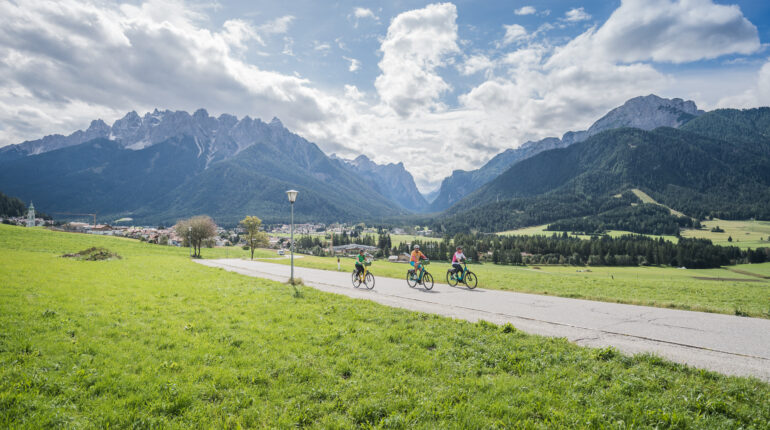
Tour information
- Duration 7 days
- Minimum age 14 years and older
- Difficulty Level Easy
- Distance 88 - 90 km
